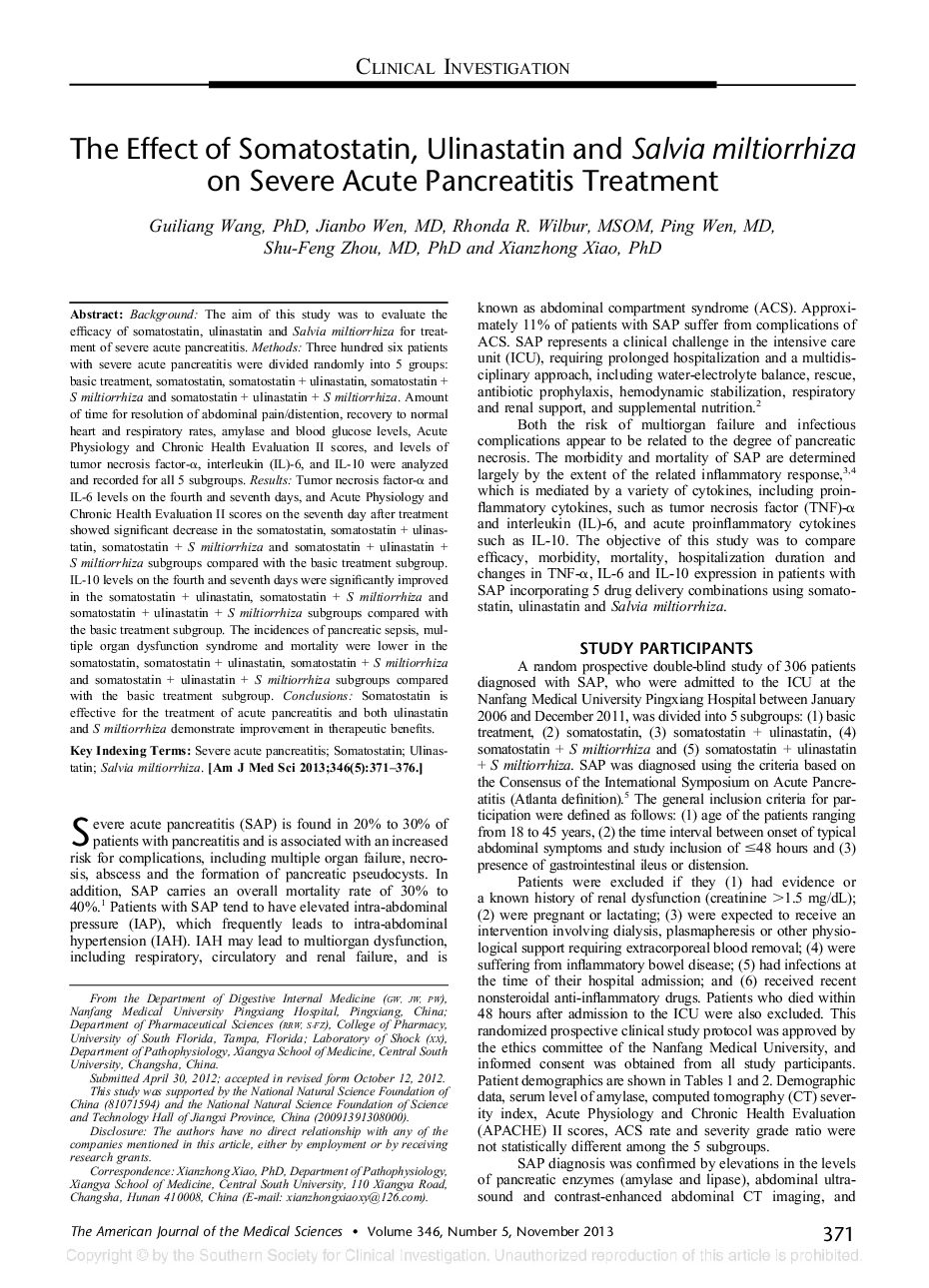| Article ID | Journal | Published Year | Pages | File Type |
|---|---|---|---|---|
| 2863579 | The American Journal of the Medical Sciences | 2013 | 6 Pages |
BackgroundThe aim of this study was to evaluate the efficacy of somatostatin, ulinastatin and Salvia miltiorrhiza for treatment of severe acute pancreatitis.MethodsThree hundred six patients with severe acute pancreatitis were divided randomly into 5 groups: basic treatment, somatostatin, somatostatin + ulinastatin, somatostatin + S miltiorrhiza and somatostatin + ulinastatin + S miltiorrhiza. Amount of time for resolution of abdominal pain/distention, recovery to normal heart and respiratory rates, amylase and blood glucose levels, Acute Physiology and Chronic Health Evaluation II scores, and levels of tumor necrosis factor-α, interleukin (IL)-6, and IL-10 were analyzed and recorded for all 5 subgroups.ResultsTumor necrosis factor-α and IL-6 levels on the fourth and seventh days, and Acute Physiology and Chronic Health Evaluation II scores on the seventh day after treatment showed significant decrease in the somatostatin, somatostatin + ulinastatin, somatostatin + S miltiorrhiza and somatostatin + ulinastatin + S miltiorrhiza subgroups compared with the basic treatment subgroup. IL-10 levels on the fourth and seventh days were significantly improved in the somatostatin + ulinastatin, somatostatin + S miltiorrhiza and somatostatin + ulinastatin + S miltiorrhiza subgroups compared with the basic treatment subgroup. The incidences of pancreatic sepsis, multiple organ dysfunction syndrome and mortality were lower in the somatostatin, somatostatin + ulinastatin, somatostatin + S miltiorrhiza and somatostatin + ulinastatin + S miltiorrhiza subgroups compared with the basic treatment subgroup.ConclusionsSomatostatin is effective for the treatment of acute pancreatitis and both ulinastatin and S miltiorrhiza demonstrate improvement in therapeutic benefits.
